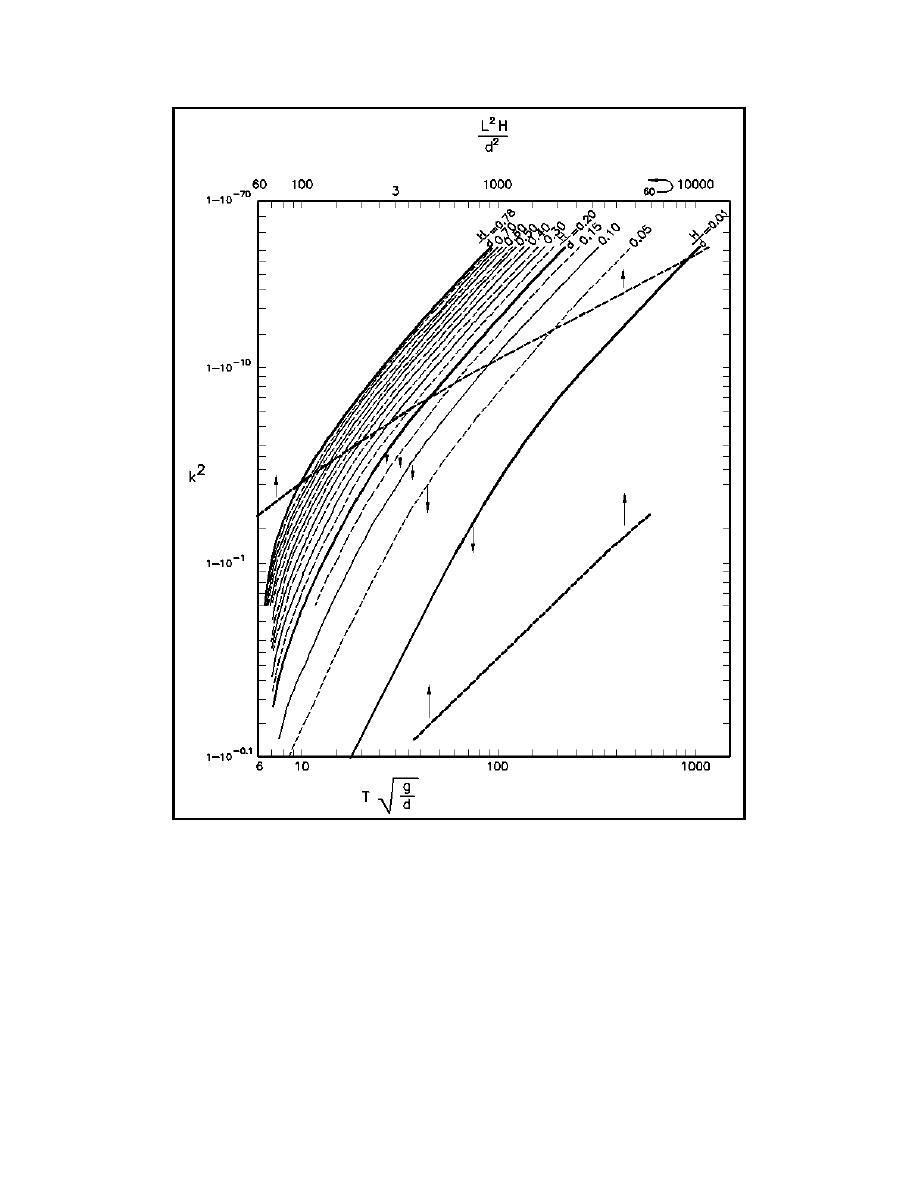
EM 1110-2-1100 (Part II)
30 Apr 02
Figure II-1-13. k2 versus L2H/d3, and k2 versus T%g &d and H/d (Wiegel 1960)
&/ &
(5) Solitary wave theory.
(a) Waves considered in the previous sections were oscillatory or nearly oscillatory waves. The water
particles move backward and forward with the passage of each wave, and a distinct wave crest and wave
trough are evident. A solitary wave is neither oscillatory nor does it exhibit a trough. In the pure sense, the
solitary wave form lies entirely above the still-water level. The solitary wave is a wave of translation because
the water particles are displaced a distance in the direction of wave propagation as the wave passes.
(b) The solitary wave was discovered by Russell (1844). Boussinesq (1871), Rayleigh (1876), Keller
(1948), and Munk (1949) performed pioneering theoretical studies of solitary waves. More recent analyses
Water Wave Mechanics
II-1-41


 Previous Page
Previous Page
